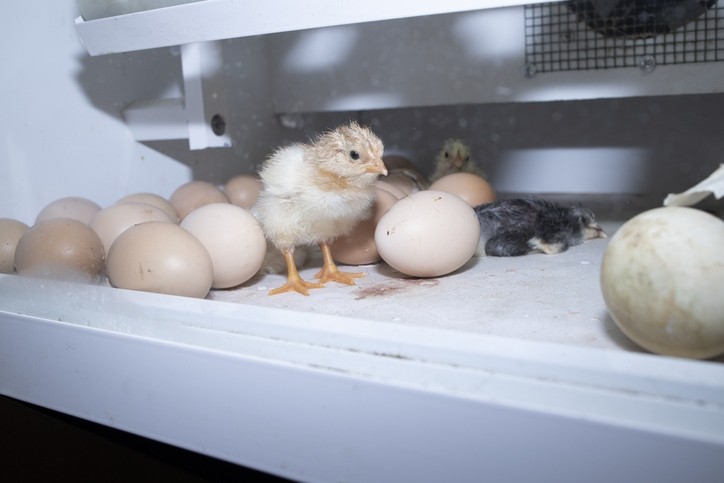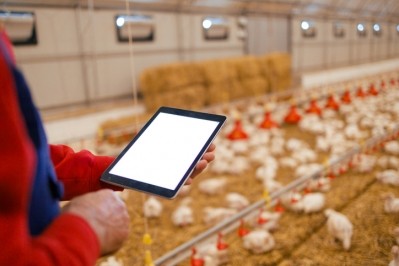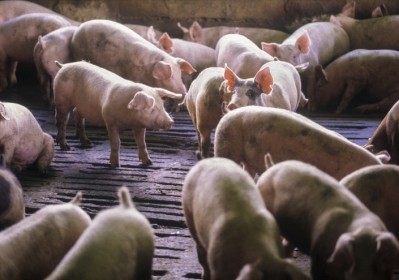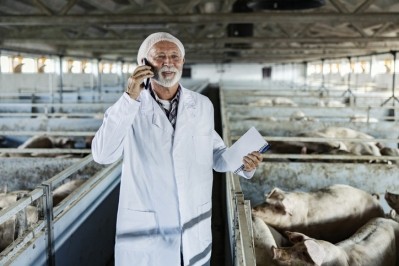Reports from IPPE 2024
Arm & Hammer addresses lower hatchability rates in poultry industry

The challenge is top of mind for US supplier, Arm & Hammer, with it releasing CERTILLUS HatchWell at the Atlanta trade show. That product is a Bacillus based solution aimed at improving breeder health and reducing bacterial infections to hatchability rates.
The goal of breeders is to hatch as many eggs as possible, but Arm & Hammer’s team noted that the industry is facing a significant decline in hatchability, both in the US and in other global markets, citing as potential reasons for this reduced hatchability breeder health, bacterial infections, nutrient imbalance, along with poor egg storage and incubation.
According to USDA data from November 2023, the average weekly hatchability in the US broiler industry during 2023 was about 80.7%, a reduction of greater than 4% since 2014.
However, a report the agency published yesterday found that broiler-type chicks hatched in December totaled 849.4 million, which was down slightly year over year, but marginally above the five-year average and “an improvement over the previous three months.”
Enterococcus faecalis has continued to trouble the poultry industry and published research studies have recently shown an increase in the presence of E. faecalis infection in nonviable chicken embryos and attributed early chick mortality to the infection, reported the Arm & Hammer team.
Those poultry specialists conducted studies to identify Bacillus strains that would specifically inhibit the growth of different Enterococcus species in vitro using the company’s library of over 30,000 Bacillus isolates to do so. Bacillus strains that were deemed highly effective in inhibiting E. faecalis strains in in vitro testing were used to formulate CERTILLUS HatchWell.
We ran a Q&A with Jodi Delago, product development manager, Arm & Hammer, to hear more about that selection process.
FeedNavigator: What specific criteria did you use to identify Bacillus-based strains for this purpose?
Jodi Delago: The Bacillus strains used in this formulation were selected based on two main criteria; the ability to inhibit E. faecalis, which is frequently isolated from non-viable hatching eggs and is thought to have a role in embryonic mortality, and the ability of the strains to improve intestinal barrier function.
E. faecalis is a normal inhabitant of the poultry intestinal microbiome and is frequently found in the intestinal tract of broiler breeders. It is currently unknown how the hatching eggs are becoming contaminated with E. faecalis.
One hypothesis of the transmission mode of E. faecalis to hatching eggs is vertical transmission of E. faecalis from hen to egg, perhaps through contaminated reproductive organs. When E. faecalis remains in the intestinal tract it is typically a harmless member of the bird’s microbiota. However, when intestinal epithelial barrier is weakened, through stress, inflammation, or intestinal disease, bacteria can translocate across the barrier to establish systemic infection. E. faecalis may colonize the reproductive organs of broiler breeders and may be transmitted to the developing egg while still in the hen.
An alternative hypothesis of transmission mode is fecal contamination of eggs leading to penetration of E. faecalis into the egg after it has been laid. In either case, to mitigate the impacts of E. faecalis contamination of eggs on embryonic mortality, it is important to limit the growth of this bacterium in the intestinal tract of broiler breeders. Bacillus strains that can directly inhibit the growth of E. faecalis may help to reduce the level of this bacterium within the intestinal tract and reduce the likelihood of transmission to eggs. Additionally, including Bacillus strains that improve intestinal barrier function may reduce the chances of translocation of E. faecalis and establishment systemic infection, thereby reducing possible contamination of eggs through vertical transmission directly from breeder to chick.
FEN: Were there any specific characteristics or properties of Bacillus strains that influenced your decision?
JD: Bacillus species are always an attractive option for animal feed applications because they are able to form endospores, a hardy, dormant phase that is resistant to a range of environmental conditions that typically kill bacterial cells. In the endospore form, the Bacillus can withstand high heat and other conditions used for production and storage of animal feeds that would kill vegetative bacterial cells, ensuring that the probiotic strains will remain alive until they reach the animal’s intestinal tract where they can return to their metabolically active form and provide the benefits that we want to provide the animal.
FEN: Which Bacillus strains are included in the probiotic formulation, and what are their specific attributes that make them suitable for addressing Enterococcus challenges?
JD: Two proprietary Bacillus strains were included in the formulation. Both show strong inhibition of E. faecalis in in vitro testing. One of the strains has also been shown to promote a strong intestinal barrier function in cell culture assays. One of the proposed methods of transmission of Enterococcus to eggs is vertical transmission of the bacterium from the breeder stock during the development of the egg in the hen. This is thought to potentially occur from carriage of Enterococcus in the reproductive organs of the breeders, likely resulting from translocation of bacteria across the intestinal epithelial barrier, as Enterococcus are normal inhabitants of the intestinal microbiota. One of the strains in the formulation has been shown to promote barrier function and may help prevent colonization of Enterococcus in the reproductive organs, thus reducing transmission to eggs. Both Bacillus strains have shown strong inhibition of Enterococcus faecalis in vitro. Reducing the carriage of this bacterium in the intestinal tract, the feces, and the production environment may also help reduce transmission regardless of the mode of transmission to the egg.
FEN: Have these strains demonstrated effectiveness against Enterococcus species in previous applications or studies?
JD: As there is not yet a challenge model developed for this issue, it has not been possible to conduct challenge studies to evaluate the product in a research setting. However, we have seen improvements in hatchability in field trials comparing flocks fed the Hatchwell product versus control flocks.
FEN: Are there any synergistic effects with the poultry's natural microbiota that contribute to the probiotics' efficacy?
JD: Previous studies with Arm & Hammer Bacillus products have shown that a stable, mature microbiome is achieved more quickly in chicks fed the products from the time of placement. A stable, mature microbiome can help to reduce colonization of pathogens and promotes intestinal health.
FEN: What is the recommended application protocol for administering these probiotics to broiler breeders?
JD: The product is provided as a feed supplement and a feed application is the preferred application method. A water-soluble formulation that can be used as a water application is also available. It is recommended that the product be fed from chick placement through the life of the flock for maximum effectiveness.
FEN: Are there specific considerations or best practices for integrating these probiotics into existing poultry management practices?
JD: Arm & Hammer animal and food production views itself as more than a probiotic supplier, but a partner for our clients that can help them find solutions for the production challenges. It is recommended that clients work with their Arm & Hammer representatives to integrate our solutions into their systems.
FEN: What methods or tools do you recommend for monitoring the effectiveness of the probiotics in the poultry flock?
JD: We recommend monitoring hatchability and early chick morbidity and mortality to assess the efficacy of the product.














